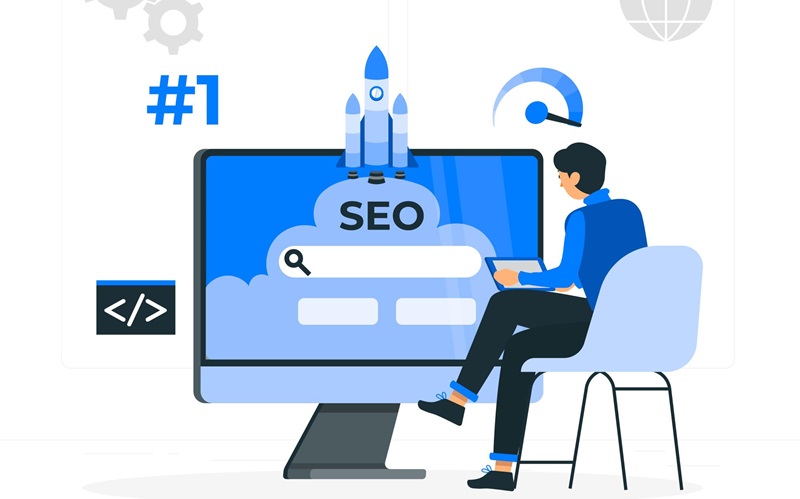In the ever-evolving world of digital marketing, refining your approach to SEO is critical for staying competitive. This calls for strategies that extend beyond basic keyword optimization. Content mapping stands out as a sophisticated method, designed to tailor your website’s content to the varied stages your consumers navigate through during their purchasing journey. This guide is your step-by-step navigator through the process, revealing how to apply techniques that align with SEO best practices to ensure that each visitor is met with the information they need, right when they need it.
Identify Your Target Audiences
Your SEO strategy kicks off with a clear comprehension of your target audiences. By dissecting the layers that form your customer base, you can ensure your content strategically resonates with each unique segment. Begin with compiling rich data on your customers through a variety of methods like surveys and web analytics. Use this information to build buyer personas that portray your ideal customer’s demographics, goals, and habits. For instance, a digital marketer named Dan could personify a segment of your audience. His challenges, professional aspirations, and preferred content consumption behavior would dictate how you structure your website’s content to meet his specific needs.
Understanding your audience at this intricate level primes you for crafting a content strategy that speaks directly to their journey through your sales funnel.
Outline The Consumer Journey
Comprehending how your buyer moves from awareness to decision is fundamental. Structure this path into three main phases: awareness, consideration, and decision. For example, a digital marketer like Dan realizes a need to enhance his department’s ROI and sinks into research mode during the awareness phase. During consideration, he’s comparing platforms, diving into feature sets, and benefits. Finally, in the decision phase, he’s ready to take out his credit card after reviewing customer testimonials that alleviate any last-minute hesitations. This consumer journey map serves as a blueprint to strategize and distribute your content appropriately.
Categorize Existing Material Across The Buyer’s Journey Stages
Equipped with a clear consumer journey, assigning your existing web content to corresponding stages is essential. Establish categories: top (TOFU), middle (MOFU), and bottom of the funnel (BOFU). Educational blog posts guide users during the TOFU stage, whereas webinars at MOFU probe deeper into solving a user’s problem. Lastly, testimonials at BOFU substantiate your product, nudging the consumer towards the final purchase. This exercise refines your content’s impact by anchoring it to specific journey milestones, ensuring relevance, and moving visitors through the conversion funnel smoothly.
Tailor Existing Pages To Specific Keywords
Here, you align each content piece with the right phase-appropriate keyword. Starting with an expansion of your keyword list, including both search intent and volume data, is crucial. Meticulous retooling of each page’s meta tags and a vigilant approach to avoid keyword cannibalization will result in improved keyword optimization. Match keywords to the right stage of the buyer’s journey to advance your SEO. By doing so, you create a pathway of content that’s seamless for users to navigate, further bolstering your website’s architectural integrity from an SEO standpoint.
Intelligently Refresh Internal Linking
Internal linking is not just a navigational tool; it’s a strategic element that can guide a prospect deeper into your sales funnel. Internal links must be plot points in the narrative of the consumer journey, moving visitors from general informational content to comparison guides and finally, to conversion-focused pages. Continue to enhance the connectivity of your site’s content by adjusting internal links to form a clear route towards conversion while promoting link equity distribution throughout your site.
Spot Missing Content And Update Your Editorial Schedule
To stay ahead in the dynamic landscape of digital marketing, it’s vital to continually enhance your SEO tactics. Beyond just focusing on keywords, delving into the more advanced technique of content mapping is essential. This strategy is finely tuned to create a content experience that perfectly aligns with the different stages of your consumer’s buying process.
This comprehensive guide serves as your navigator, meticulously outlining each step to integrate SEO best practices with content mapping. By utilizing these methods, you ensure that your website delivers the precise information your visitors are searching for at the exact moment they need it.
By optimizing your content to match the customer’s journey, you not only improve user engagement but also boost your site’s relevance and authority. This guide will reveal the secrets to crafting content that both resonates with your audience and complies with search engine algorithms, paving the way for improved visibility and better search rankings.
Whether you’re a seasoned marketer or new to the field, understanding how to effectively map your content to meet the evolving needs of your users is an indispensable skill that will set your website apart and provide your visitors with a seamless and valuable online experience.

